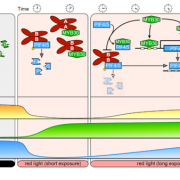
MYB30 negatively regulates photomorphogenesis by interacting with PIFs and phytochromes in Arabidopsis (Plant Cell)
Plant Science Research WeeklyPhotomorphogenesis is the growth and development of plants in response to light. The phytochrome family of photoreceptors absorbs red and far-red light, and in Arabidopsis the most abundant phytochromes are phyA and phyB. PHYTOCHROME-INTERACTING FACTORS (PIFs) repress photomorphogenesis, and under red…
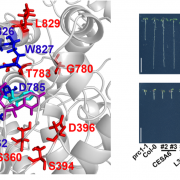
Endosidin20 targets the cellulose synthase catalytic domain to inhibit cellulose biosynthesis (Plant Cell)
Plant Science Research WeeklyCellulose is an indispensable component of plant cell wall formation. Cellulose is synthesized at the plasma membrane by a cellulose synthase complex (CSC) made up of at least 18 monomeric cellulose synthases (CESAs). In this study, Huang et al. used a chemical genetic approach to explore the structure…

Mutations PETALOSA cause a dominant double-flower phenotype (J. Exp. Bot.)
Plant Science Research WeeklyFlower development has always been a fascinating field of research in plant biology. While molecular studies in the past focused on regulatory genes involved in the formation of floral organs in model species, current investigations are addressing the genetic determinants underlying the huge variety…
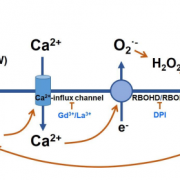
Hydrogen mediates tolerance to cadmium-induced root toxicity (Plant Physiol.)
Plant Science Research WeeklyHeavy metals are a potential threat to human health, especially in areas with high industrial activity where the metals leach in the soil to contaminate underground water. These metals are a threat to plants too, resulting in stunted growth and their eventual death. Wu et al. carried out a mechanistic…
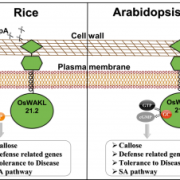
A moonlighting kinase induces immune responses in rice and Arabidopsis ($) (Plant Physiol.)
Plant Science Research WeeklyBacterial infections are a serious issue for crop plants and it is thus imperative to understand the mechanisms employed by plants to develop resistance against pathogens. Malukani et al. have identified a receptor kinase in rice, WALL-ASSOCIATED KINASE-LIKE 21 (OsWAKL21.2) that perceives pathogen-induced…
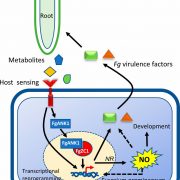
Mechanistic insights into host perception by a fungal pathogen (PNAS)
Plant Science Research WeeklyHost perception is crucial for soil-borne microbes to successfully colonize plant roots. Ding et al. conducted transcriptome analysis of the fungal pathogen Fusarium graminearum (Fg) in the presence of its host plant Brachypodium distachyon (Bd), either without direct contact (precontact) or during colonization.…
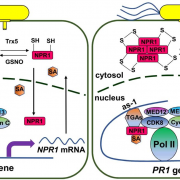
Master regulator of gene expression in plant defense upregulates its own transcription (Plant Physiol.)
Plant Science Research WeeklyNPR1 (NONEXPRESSER OF PR GENES1) is a master regulator that controls expression of over 2000 genes during plant defense. NPR1 interacts with transcription factors to activate expression of defense genes, but the mechanism is poorly understood. Chen et al. determined that in the presence of salicylic…
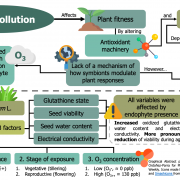
The negative effect of a vertically transmitted fungal endophyte on seed longevity is stronger than that of ozone transgenerational effect ($) (Environ. Exp. Bot.)
Plant Science Research WeeklyGlobal environmental change brings new challenges to plants at different levels, including seed development and persistence. For example, the increasing ground-levels of ozone (O3) can affect seed viability, as a result of changes in the mother plant antioxidant machinery. These responses might depend…
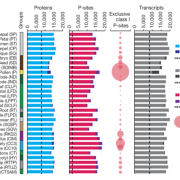
Tissue-resolved multi-omics atlas of Arabidopsis (Nature)
Plant Science Research WeeklyArabidopsis as a model system has been intensively studied over the past twenty years, but the proteome of Arabidopsis has been less well characterized. Here, Mergner et al. report the first 30-tissue-type integrated proteome, phosphoproteome and transcriptome atlas of Arabidopsis. The data cover the…

